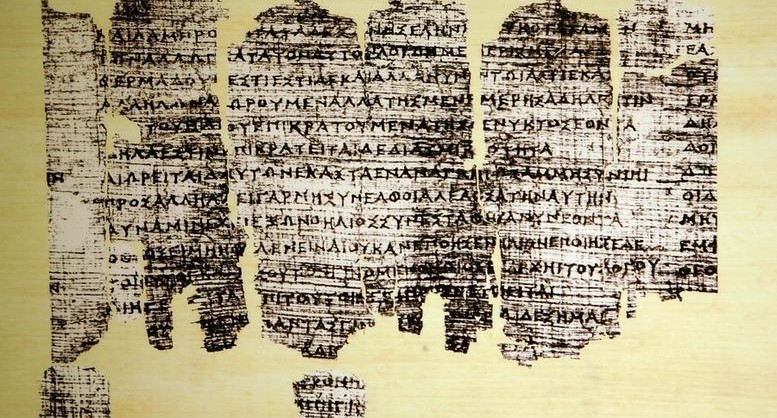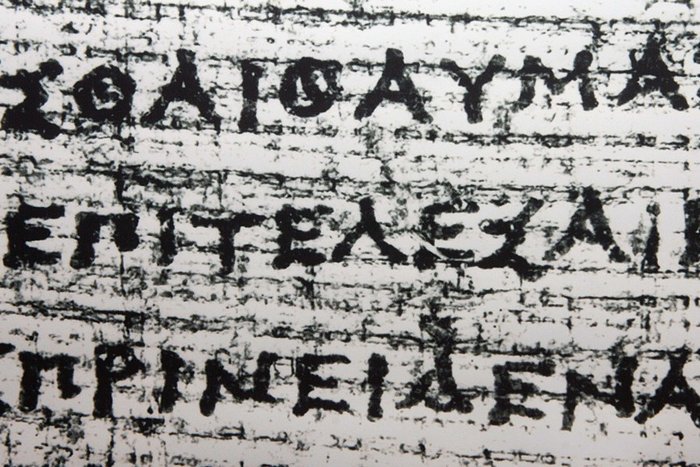The Derveni Papyrus, the most ancient manuscript in Europe and only readable papyrus to have survived in Greece, is a candidate for the UNESCO list of documented Heritage Monuments. Archaeologists believe that the Derveni papyrus was written around 340-320 B.C. and is a copy of an older version written in the 5th century B.C.
Only one of nine panels is exhibited at the Thessaloniki museum and the rest are held at the museum’s storage for preservation purposes. To enter the UNESCO list, however, the ancient manuscript should be exhibited in its totality. The International Council of Museums is discussing the possibility of this happening. Last year was the first time that the manuscript was exhibited as a whole for the 4th Biennale of Contemporary Art.
The Ancient Greek manuscript was found on January 15, 1962, in Derveni, Macedonia, northern Greece, in ashes atop an ancient tomb. For this reason, it was carbonized by the funeral pyre and not affected by humidity.
The text is a philosophical treatise that is an allegorical commentary on an Orphic poem about the birth of the gods that was written by someone close to philosopher Anaxagoras in the second half of the 5th Century B.C. and dates to around 340 B.C. during the date of Philip II of Macedon.






































